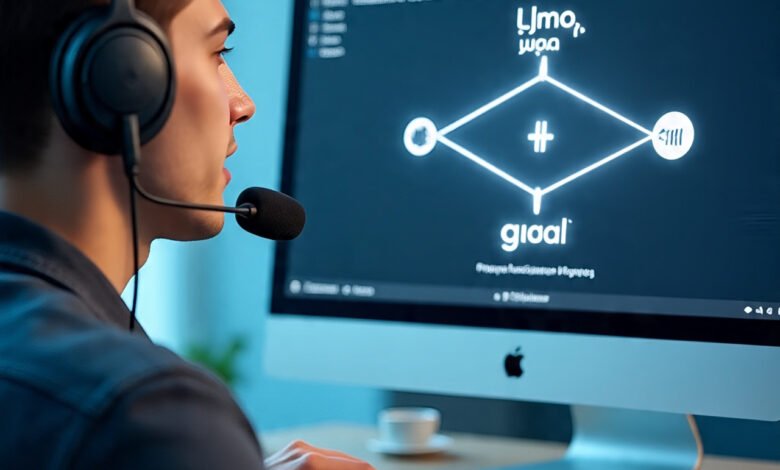AI-Powered Lip Sync and Translation Tools for Your Video Needs

In today’s globalized and fast-paced digital landscape, creating video content that resonates across languages and cultures is no longer just a bonus — it’s a necessity. Whether you’re a content creator, educator, marketer, or business professional, you’ve likely faced the challenge of reaching a diverse audience. That’s where AI-powered lip sync and translation tools step in, transforming the way videos are localized and shared across the globe.
These tools combine advanced artificial intelligence technologies like deep learning, natural language processing, and computer vision to automatically translate speech, generate accurate subtitles, and even synchronize mouth movements to match dubbed audio — all without the need for costly manual editing or hiring multilingual voice actors. Let’s explore how these tools work, why they matter, and how they’re shaping the future of video content.
What Are AI-Powered Lip Sync and Translation Tools?
At their core, AI-powered lip sync AI free and translation tools are software platforms or APIs that automate the process of making videos multilingual and culturally adaptive. These tools usually include a combination of the following features:
- Speech Recognition: Transcribes the original spoken language into text using Automatic Speech Recognition (ASR).
- Translation: Translates the transcribed text into a target language using Neural Machine Translation (NMT).
- Text-to-Speech (TTS): Converts the translated text into spoken audio, often in a natural-sounding, synthetic voice.
- Lip Sync: Uses computer vision and deepfake-style AI models to alter the speaker’s mouth movements to match the new audio.
The result? A translated video that looks and sounds native to the viewer — not just in words, but in the way it’s presented visually and emotionally.
Why It Matters: Breaking Language Barriers
Video is one of the most powerful mediums for communication. But if your audience can’t understand the language, your message gets lost. Traditionally, there have been two ways to address this:
- Subtitles — which can be distracting or ineffective for those with limited reading ability or visual impairments.
- Dubbing — which is expensive, time-consuming, and often results in out-of-sync lip movements that reduce viewer immersion.
AI-powered solutions offer a seamless alternative by combining dubbing and visual syncing automatically. This not only enhances accessibility and user experience but also significantly reduces localization costs and turnaround times.
How It Works: A Behind-the-Scenes Look
To understand the magic behind these tools, it helps to break down the typical workflow:
- Input Upload: The user uploads a video file to the platform.
- Audio Transcription: The AI extracts and transcribes the original audio using speech recognition.
- Translation: The transcript is then translated into the desired language using sophisticated machine translation models like Google’s Transformer or OpenAI’s GPT-based models.
- Voice Generation: A synthetic voice (either cloned from the original speaker or selected from a library) reads the translated text.
- Lip Synchronization: Using deep learning models trained on facial landmarks and phoneme-to-viseme mapping, the AI modifies the video frame-by-frame to align lip movements with the dubbed audio.
- Final Rendering: The result is a fully synchronized, translated video ready for global audiences.
Many tools also offer subtitle generation and the ability to fine-tune voice style, emotion, or pacing to better suit the target audience.
Real-World Applications
AI-powered lip sync and translation tools are already being adopted across various industries:
- Content Creation: YouTubers and TikTokers can instantly expand their reach to global audiences without learning new languages or hiring translators.
- E-learning: Online educators and institutions can localize courses into multiple languages, enhancing inclusivity and engagement.
- Corporate Training: Global companies can train employees across regions with consistent messaging, regardless of native language.
- Marketing and Advertising: Brands can quickly adapt promotional videos for different markets without compromising quality or brand voice.
- Entertainment and Film: Studios are exploring AI dubbing to reduce the cost and time of international distribution.
Leading Tools in the Market
Some of the leading platforms providing these services include:
- Synthesia: Known for its AI avatars and voice dubbing capabilities.
- HeyGen: Offers multilingual video translation with real-time lip sync.
- DeepDub: Focuses on dubbing movies and TV shows with AI voice actors.
- Papercup: Uses AI to voiceover and translate videos into multiple languages with human-like emotion and tone.
Each of these tools brings a unique angle, whether it’s customization, speed, or realism — making them ideal for different types of users.
Challenges and Ethical Considerations
While the technology is impressive, it’s not without concerns. Deepfake technology used in lip sync can be misused, raising questions around consent, authenticity, and misinformation. Moreover, while AI-generated voices have improved dramatically, they still may lack the nuance and emotional depth of human actors in some cases.
That said, many platforms now require consent before replicating a person’s likeness or voice, and watermarking or disclosure mechanisms are being implemented to signal AI-generated content.
The Future of AI-Driven Video Localization
As AI continues to evolve, so will its capabilities in video translator and lip syncing. In the near future, we can expect:
- Real-time translation and dubbing during live video calls or broadcasts.
- Emotion-aware translations that adapt tone and delivery to match cultural expectations.
- Personalized viewing experiences, where videos are tailored not just to language but also to dialect, region, or viewer preferences.
Ultimately, AI-powered tools are democratizing access to global audiences, allowing creators and businesses to connect with the world — one translated, lip-synced video at a time.
Conclusion
AI-powered lip sync and translation tools represent a major leap forward in making video content universally accessible, engaging, and culturally relevant. Whether you’re scaling your business or just starting your content journey, these tools can help you break language barriers and create more meaningful connections across borders.
